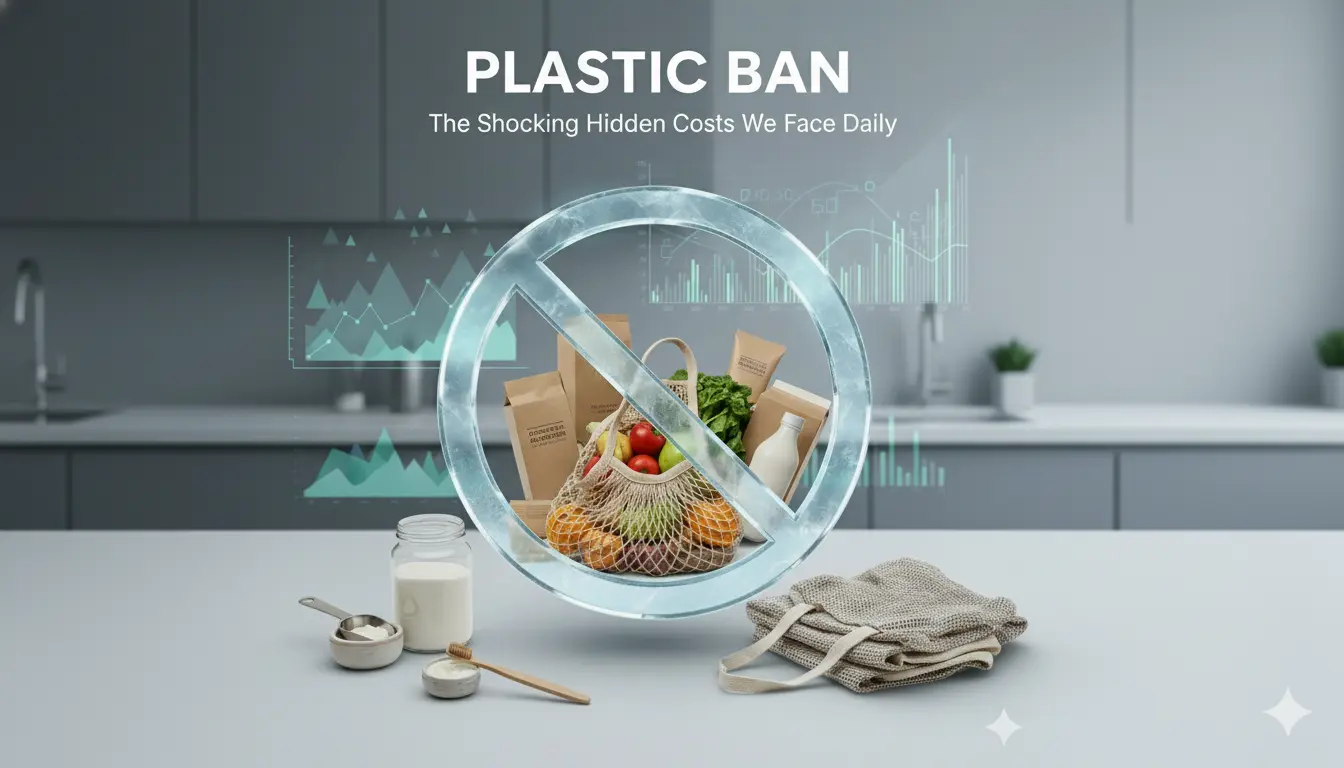Plastic Ban: The Shocking Hidden Costs We Face Daily
Posted by Aster on October 8, 2025

The debate around whether plastic should be banned rages on, often focusing on the immediate visual pollution we see around us. But what if the real cost of our plastic addiction is far more insidious, affecting not just our environment but also our economy and health in ways we barely understand? This article delves into the hidden costs of plastic, urging us to reconsider our relationship with this ubiquitous material and explore effective plastic waste management strategies.
The Visible Impact: More Than Just Litter
We see plastic littering our streets, choking our landfills, and floating in our oceans. The images of marine life entangled in plastic are heartbreakingly familiar. However, these visible impacts are just the tip of the iceberg.
- Ocean Pollution: Studies estimate that millions of tons of plastic enter the ocean each year, harming marine ecosystems and impacting fisheries. This links to the discussion of India's renewed fight against plastic pollution.
- Landfill Crisis: Landfills are overflowing with plastic waste, contributing to soil and water contamination.
- Aesthetic Degradation: Plastic pollution diminishes the beauty of our natural landscapes, impacting tourism and recreation.
The Invisible Costs: A Deeper Dive
Beyond the obvious, plastic imposes a range of hidden costs that are often overlooked. These include:
Environmental Degradation
Plastic production and disposal contribute significantly to greenhouse gas emissions, exacerbating climate change. The extraction of fossil fuels, a key ingredient in plastic manufacturing, releases harmful pollutants into the atmosphere.
- Microplastic Pollution: Plastic breaks down into microplastics, tiny particles that contaminate our water sources and enter the food chain.
- Chemical Leaching: Plastics can leach harmful chemicals into the environment, posing risks to human and animal health.
- Impact on Soil Health: Plastic pollution disrupts soil ecosystems, affecting plant growth and agricultural productivity.
Economic Burdens
The economic costs of plastic pollution are substantial, encompassing:
- Cleanup Costs: Governments and organizations spend billions of dollars annually on cleaning up plastic waste.
- Healthcare Costs: Exposure to plastic-related chemicals can lead to various health problems, increasing healthcare costs.
- Impact on Tourism: Plastic pollution deters tourists from visiting affected areas, harming local economies.
- Loss of fisheries: As plastic bags hurt our oceans more than you think, marine life is at risk. The loss of marine life impacts fishermen's livelihood and causes economic loss.
Health Implications
The health risks associated with plastic are increasingly concerning:
- Endocrine Disruption: Chemicals in plastic, such as BPA and phthalates, can disrupt the endocrine system, leading to hormonal imbalances and reproductive problems.
- Cancer Risks: Some plastic additives are linked to increased cancer risks.
- Respiratory Problems: Exposure to plastic fumes during incineration can cause respiratory problems.
Case Studies: Real-World Examples of the Plastic Crisis
The Great Pacific Garbage Patch
This massive accumulation of plastic debris in the Pacific Ocean serves as a stark reminder of the scale of the plastic pollution problem. It highlights the urgent need for effective plastic waste management strategies.
The Alarming Rise of Microplastics
A recent study found microplastics in human placentas, raising concerns about the potential impact on fetal development. This underscores the pervasive nature of plastic pollution and its potential health consequences.
Hiware Bazar: An inspiration to others
If you are wondering, can we ditch plastic bottles without messing up daily life, then you can consider the example of Hiware Bazar village in Maharashtra. The village has banned the use of plastic and promotes sustainable practices. Hiware Bazar is a prime example of community-led initiatives for environmental conservation.
Solutions: Towards a Plastic-Free Future
Addressing the plastic crisis requires a multi-pronged approach involving individuals, businesses, and governments.
Reducing Plastic Consumption
- Use reusable bags, bottles, and containers.
- Avoid single-use plastics whenever possible.
- Support businesses that prioritize sustainable packaging.
- Consider supporting sustainable initiatives like Carbon Credits which promote responsible environmental practices.
Improving Waste Management
- Invest in better recycling infrastructure.
- Promote composting of organic waste.
- Implement effective waste segregation programs.
Promoting Innovation
- Develop biodegradable alternatives to plastic.
- Explore new technologies for plastic recycling and upcycling.
Policy and Regulation
- Enforce stricter regulations on plastic production and disposal.
- Implement extended producer responsibility (EPR) schemes.
- Support international agreements to address plastic pollution.
The plastic ban is not just about eliminating a convenient material; it's about addressing a systemic problem that threatens our environment, economy, and health. By acknowledging the hidden costs of plastic and embracing sustainable alternatives, we can pave the way for a healthier and more sustainable future.
The effective implementation of the plastic waste management rules is also important for promoting responsible environmental practices.